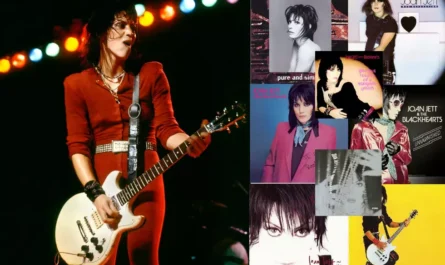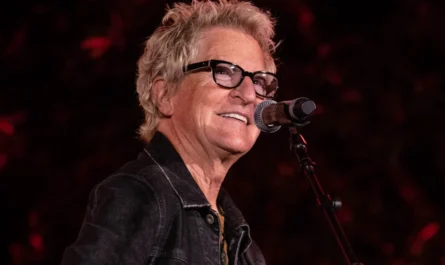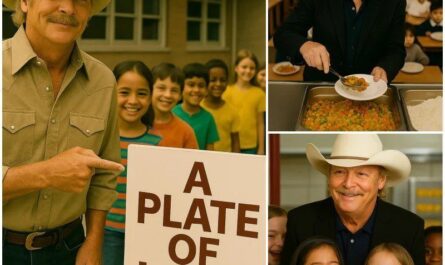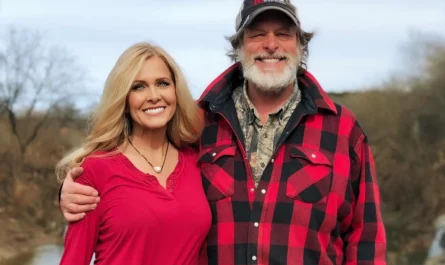Marty McFly ripped through Chuck Berry’s “Johnny B. Goode” at the local high school dance, with his fiery performance ending with a searing lick that was met with silence from the students in attendance.
“I guess you guys aren’t ready for that,” he sheepishly commented. “But your kids are gonna love it. The rogue time traveler musician, played by Michael J. Fox, may have caught them by surprise with his musical stylings, but for movie viewers who saw Back to the Future in the theaters in 1985, it instantly became one of the film’s most memorable scenes.
40 years later, Fox is looking back at the whirlwind experience he had working on Back to the Future in his new book, Future Boy, which was released on Oct. 14. It gives the actor a chance to pull back the curtain on his chaotic schedule back then. He was working 20-hour days, filming the television series Family Ties during the day, while shifting to working on Back to the Future at night. As he writes in the prologue, there was plenty of time for Alex P. Keaton (his Family Ties character) and Marty McFly, but there was little time for Michael J. Fox, the person.
It’s understandable how one could leave the experience feeling a little bit scattered because of that workload and indeed, that was the case for Fox. “It’s taken me four decades to piece it all together,” he shares.
How ‘Back to the Future’ Slipped in a Sly Tribute to a Few Guitar Heroes
Honoring Chuck Berry by using “Johnny B. Goode” would have been enough of a tribute, but as Fox details in Future Boy, they put in a few additional Easter eggs that guitar players, in particular, might have picked up on. Holding the guitar low and dropping to his knees without missing a lick was McFly’s Jimmy Page moment. The guitar over the back of his head? Jimi Hendrix, of course. Jumping into the speaker stack, leaping in a gymnastic fashion, the windmill and other moves? That was all a multi-layered tribute to Pete Townshend of the Who.
There was even some tapping, one of a couple of moments of homage in the movie for Eddie Van Halen. The “Johnny B. Goode” scene ended up being a favorite for director Robert Zemeckis, who was thrilled by what Fox and his collaborators, including choreographer Brad Jeffries and guitar teacher Paul Hanson had pulled together. “He shared with me that the days spent on this scene were the most fun he’d had [working] on the movie,” the actor writes. He specifically picked up on the guitarist tributes. “It was so cool, all of the different through-time guitar riffs,” Zemeckis told him. “I loved it.”
READ MORE: The Night Marty McFly Invented Rock ‘N’ Roll
Ironically, as Fox points out, it was a scene that had no reason to be in the movie and in fact, interrupted the flow of the plot. As the band is on stage playing prior to “Johnny B. Goode,” his future parents, George and Lorraine, share the kiss that seals the deal for him to finally be ready to go from 1955 back to his usual existence in 1985.
Why did Marty need to stick around for another song? He theorizes that Zemeckis and co-writer Bob Gale added the scene to inject a moment of “pure joy” into the film. “I defy you to watch it without smiling,” he adds. But there’s also another angle he sees as a lucky break. It may have unintentionally served an additional purpose. It gave fans a moment to process what they’d just seen with George and Lorraine, without them getting hung up in worrying what would come next, i.e. would the pair actually end up staying together? The music, in that sense, gave them a crucial chance to disconnect for a beat.
Just like Marty McFly, Michael J. Fox Played With Bands
Even though Fox wasn’t actually singing and playing with the Starlighters in the film, he did play some early gigs of his own, pre-fame. “I was a guitarist of modest talent, very little talent,” he told journalist Willie Geist in a new interview. “But I loved to play guitar. I played in bands when I was a kid.” During his time in Burnaby, Canada, one of those bands was called Halex. “We played a lot of church basements and we were the house band at the Naval Academy.”
“We just basically scored fights. We’d play and there’d be these bouncer bodyguard types [from the] local football team who would come and stand in front of our PA speakers so they wouldn’t get damaged,” he recalls. “When they’d fight, we’d play something more mellow and they’d [continue to] fight.”
“But it was really great a few times,” he says now. “I remember my father coming to see us and standing in the back of the room. He was kind of impressed. He said, ‘How much money do you make for this?’ I said, ‘100 dollars.’ He said, ‘That’s really great. How much did it cost you to rent the equipment?’ ‘400 dollars.'”
His musical aspirations, paired with the financial realities ultimately helped to steer Fox down a different path and even now, he is grateful for what he eventually accomplished with Back to the Future. “It was just so fun, I was 23 years old and had the world by the tail and was workin’ my butt off with all of these great people.” he reflects. “People are interested and [this book is] a way to kind of tip my hat to all of those folks who have supported this movie for 40 years.”
How Does Michael Feel About ‘Back to the Future’ Now?
He says he still loves it and finds himself watching it, sometimes all of the way through, when he finds it on television. But there’s at least one topic he admits fans should leave on the shelf when they talk to him in public. “They want to talk to me about time travel and I say, ‘You’re wasting your time, I have no idea,” he laughs, before getting more serious and pointing out that one reason the movie still endures is because it’s inspiring when it comes to confronting bullies and adversity, two subjects that people face regularly in real life. “It’s a great message to just overcome the doubters and the people who say you can’t do things.”





